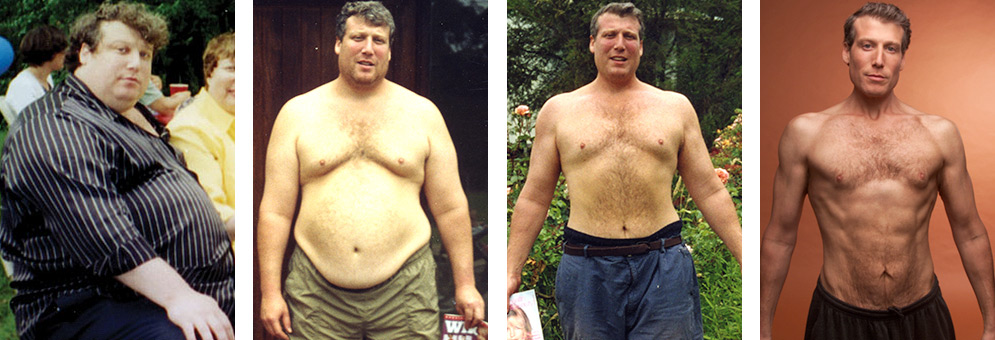 The United States is the fattest nation in the world, but other developed countries are not far behind. Market analysts estimate that the global diet industry generates $390 billion annually, and it’s believed that spending will nearly double by 2015.(2)
The United States is the fattest nation in the world, but other developed countries are not far behind. Market analysts estimate that the global diet industry generates $390 billion annually, and it’s believed that spending will nearly double by 2015.(2)
There are 1.4 billion overweight adults and 40 million overweight children worldwide, so our global weight problem is reaching critical mass, and there’s a desperate need for a solution.(1)
“But how is it possible with so much money invested in such a huge problem, we’ve yet to find a real solution?”
The answer is simple. Diets don't work. If they did, or if even just one or two of the thousands of diets available did work, the obesity epidemic would no longer exist. Let’s take a closer look at what’s really going on.
If you've been on a diet or exercise program for several months and are losing weight, fantastic! But if you're like most people, you will hit the dreaded weight loss plateau. Suddenly, the calories-in, calories-out theory taught by most diet books and personal trainers just flat-out stops working.
You’re eating right and exercising right—but you’re not losing any more weight.
Have you ever experienced this? Here’s the problem. Restrictive dieting slows your metabolism and can often put your body in a famine state where you’ll have fierce (and often unhealthy) cravings constantly. To complicate things more, your body quickly adjusts to your extreme exercise regime, and the same activities no longer burn as many calories as before. (3)
So you’re eating less, exercising more, and your weight is exactly the same. This depressing reality is at the core of why the “eat less, exercise more” paradigm to dieting is so fatally flawed. Long term, it just doesn’t work. In the real world, most thin people are not gym rats, and many thin people eat the same unhealthy foods as their overweight friends—they just don’t eat as much.
The real solution to lasting weight loss goes beyond calories, metabolism, and treadmills. In order to create lasting change, you need to work with your body’s biology so you get to a place where weight loss is natural, a place where your body simply wants less food.
Step One: Address Your Stress
Your body has two responses to stress: Fight or flight. If your body perceives a stress as a long-term condition that it simply has to live with, it will activate its Famine And Temperature (FAT) Programs.(4)
The human body hasn’t evolved much since prehistoric times, when the only real anxiety was caused by the possibility of starving, freezing to death, or being attacked. The FAT Programs are switched on when your body detects stress and reacts in the same way it did thousands of years ago – by gaining and storing weight to keep you “safe”.
The types of stress experienced in the modern world have changed dramatically and are mostly based on emotions rather than physical danger. For example, instead of being chased by a tiger, you might fear being chased by debt collectors.
In order to find out if stress might be activating your FAT Programs, ask yourself the following questions:
- Is there some integral part of happiness that is lacking from your life? Love? Joy? Companionship? A higher purpose?
- Do you feel secure in your job, your financial situation, your home?
- Do you feel like being larger is safer?
- Are you stopping yourself from losing weight because you believe you can't achieve your goal?
If you answered “yes” to any of these questions, you’re now closer to addressing the real source of your emotional “starvation”. Visualizations, like those found in The Gabriel Method, as well as certain Mind-Body practices like Qi-Gong, can help you cultivate a positive outlook and resolve the stress that’s keeping you from losing weight.
When the stress is gone, your body no longer needs its shield of fat. It doesn't need to protect itself, because it feels safe. It doesn't need to build up stores of energy, because it realizes there will always be plenty. Your body will no longer want to be fat and will begin to lose weight effortlessly.
Step Two: Stop Dieting
If you’ve addressed the emotional stress in your life and still can’t lose those last few pounds, you might want to take a closer look at your diet. If you’re currently following a low-carb, low-fat or any other restrictive eating regime, you are depriving yourself of the foods your body craves. Deprivation is a stress on your body, therefore dieting can often activate your FAT Programs. Additionally, if your diet is high in toxins like sugar substitutes and chemical flavor enhancers, your body could be storing fat in order to protect you.
In order to get past the plateau, you have to let go of the dieting mentality. Focus on nourishing rather than restricting. Eat what you crave while adding essential nutrients into your diet every day: protein, live foods (like fresh, local fruits and leafy green vegetables), and Omega-3 fatty acids. Drink plenty of filtered, naturally sourced water. Once your body is properly nourished and hydrated, it will stop craving the unhealthy foods that were once off-limits while you were dieting.
Step Three: Change Your Workout Just like dieting, you should also drop the calories in = calories out mentality of exercise that results in over exertion and burning-out. When your body is stress-free and well nourished, physical activity will become less of a chore and something to look forward to.
Just like dieting, you should also drop the calories in = calories out mentality of exercise that results in over exertion and burning-out. When your body is stress-free and well nourished, physical activity will become less of a chore and something to look forward to.
To work through a plateau, the key is to exercise smarter, not harder. Smart exercise ignites the “flight” stress response in your body, which is activated when you perceive an immediate threat to your life. It will make your body believe it has to be thin to survive.
Try imagining that there is a rabid dog on your heels. Sprint away from it as fast as you can until you are safe from its gnashing teeth. If you are swimming laps, pretend there is a shark stalking you. Swim as hard as you can to the safety of the ladder.
This type of exercise is a lot like High Intensity Interval Training (HIIT). It has all the benefits of HIIT, plus it tricks your body into thinking it must be in great shape in order to survive using visualization. Your body will want to be thin, and you won't be able to stop it from trying.
Once you address and eliminate the harmful stress caused by emotional turmoil and chronic dieting and start incorporating the good stress of smart exercise into your life, you’ll never have to deal with weight-loss plateaus again! You’ll be fit, healthy and in great shape in no time.
(2) Global Weight Loss and Diet Management Products & Services Market (2010-2015). 2011. www.marketsandmarkets.com/Market-Reports/weight-loss-industry-224.html
(3) Mayo Clinic Staff, “Getting past a weight-loss plateau.” www.mayoclinic.com/health/weight-loss-plateau/MY01152
(4) Gabriel, Jon. The Gabriel Method. New York: Atria Books. 2008.
(5) Photo Credit: Image credit: www.123rf.com/photo_6538197_thoughtful-young-asian-woman-relaxing-in-a-park.html
Start Your Transformation Today!



